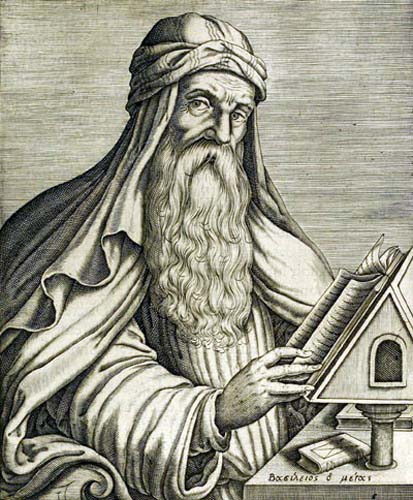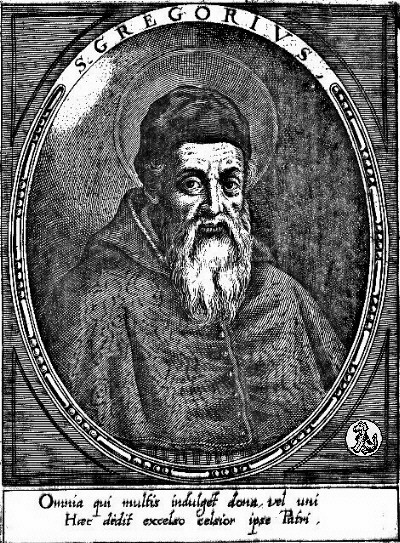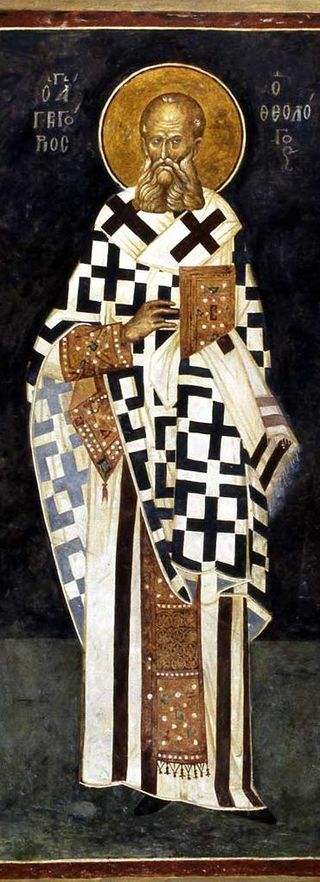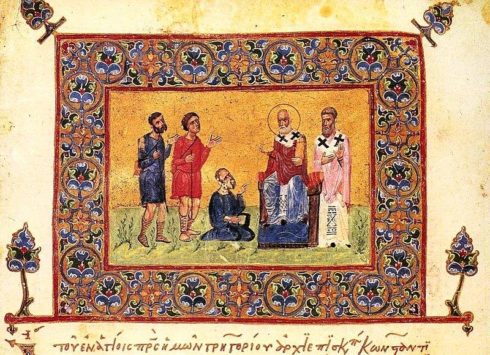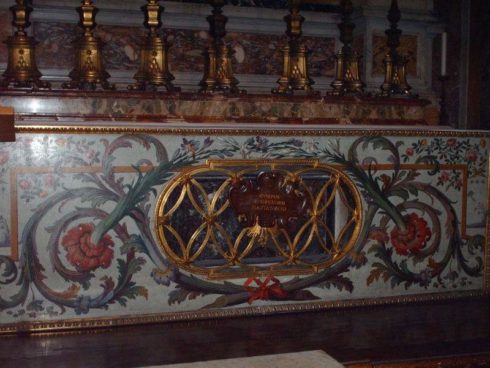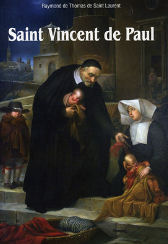St. Gregory of Nazianzus

L to R: St. Basil, St. Gregory of Nazianzus, St. John Chrysostom, Painting (Icon) by Viktor Vasnetsov
Doctor of the Church, born at Arianzus, in Asia Minor, c. 325; died at the same place, 389. He was son — one of three children — of Gregory, Bishop of Nazianzus (329-374), in the south-west of Cappadocia, and of Nonna, a daughter of Christian parents. The saint’s father was originally a member of the heretical sect of the Hypsistarii, or Hypsistiani, and was converted to Catholicity by the influence of his pious wife. His two sons, who seem to have been born between the dates of their father’s priestly ordination and episcopal consecration, were sent to a famous school at Caesarea, capital of Cappadocia, and educated by Carterius, probably the same one who was afterwards tutor of St. John Chrysostom. Here commenced the friendship between Basil and Gregory which intimately affected both their lives, as well as the development of the theology of their age. From Caesarea in Cappadocia Gregory proceeded to Caesarea in Palestine, where he studied rhetoric under Thespesius; and thence to Alexandria, of which Athanasius was then bishop, through at the time in exile. Setting out by sea from Alexandria to Athens, Gregory was all but lost in a great storm, and some of his biographers infer — though the fact is not certain — that when in danger of death he and his companions received the rite of baptism. He had certainly not been baptized in infancy, though dedicated to God by his pious mother; but there is some authority for believing that he received the sacrament, not on his voyage to Athens, but on his return to Nazianzus some years later. At Athens Gregory and Basil, who had parted at Caesarea, met again, renewed their youthful friendship, and studied rhetoric together under the famous teachers Himerius and Proaeresius. Among their fellow students was Julian, afterwards known as the Apostate, whose real character Gregory asserts that he had even then discerned and thoroughly distrusted him. The saint’s studies at Athens (which Basil left before his friend) extended over some ten years; and when he departed in 356 for his native province, visiting Constantinople on his way home, he was about thirty years of age.
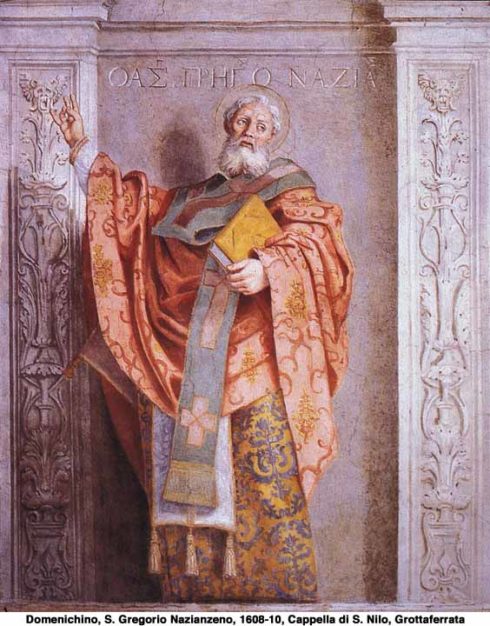 Arrived at Nazianzus, where his parents were now advanced in age, Gregory, who had by this time firmly resolved to devote his life and talents to God, anxiously considered the plan of his future career. To a young man of his high attainments a distinguished secular career was open, either that of a lawyer or of a professor of rhetoric; but his yearnings were for the monastic or ascetic life, though this did not seem compatible either with the Scripture studies in which he was deeply interested, or with his filial duties at home. As was natural, he consulted his beloved friend Basil in his perplexity as to his future; and he has left us in his own writings an extremely interesting narrative of their intercourse at this time, and of their common resolve (based on somewhat different motives, according to the decided differences in their characters) to quit the world for the service of God alone. Basil retired to Pontus to lead the life of a hermit; but finding that Gregory could not join him there, came and settled first at Tiberina (near Gregory’s own home), then at Neocaesarea, in Pontus, where he lived in holy seclusion for some years, and gathered round him a brotherhood of cenobites, among whom his friend Gregory was for a time included. After a sojourn here for two or three years, during which Gregory edited, with Basil some of the exegetical works of Origen, and also helped his friend in the compilation of his famous rules, Gregory returned to Nazianzus, leaving with regret the peaceful hermitage where he and Basil (as he recalled in their subsequent correspondence) had spent such a pleasant time in the labour both of hands and of heads. On his return home Gregory was instrumental in bringing back to orthodoxy his father who, perhaps partly in ignorance, had subscribed the heretical creed of Rimini; and the aged bishop, desiring his son’s presence and support, overruled his scrupulous shrinking from the priesthood, and forced him to accept ordination (probably at Christmas, 361). Wounded and grieved at the pressure put upon him, Gregory fled back to his solitude, and to the company of St. Basil; but after some weeks’ reflection returned to Nazianzus, where he preached his first sermon on Easter Sunday, and afterward wrote the remarkable apologetic oration, which is really a treatise on the priestly office, the foundation of Chrysostom’s “De Sacerdotio”, of Gregory the Great’s “Cura Pastoris”, and of countless subsequent writings on the same subject.
Arrived at Nazianzus, where his parents were now advanced in age, Gregory, who had by this time firmly resolved to devote his life and talents to God, anxiously considered the plan of his future career. To a young man of his high attainments a distinguished secular career was open, either that of a lawyer or of a professor of rhetoric; but his yearnings were for the monastic or ascetic life, though this did not seem compatible either with the Scripture studies in which he was deeply interested, or with his filial duties at home. As was natural, he consulted his beloved friend Basil in his perplexity as to his future; and he has left us in his own writings an extremely interesting narrative of their intercourse at this time, and of their common resolve (based on somewhat different motives, according to the decided differences in their characters) to quit the world for the service of God alone. Basil retired to Pontus to lead the life of a hermit; but finding that Gregory could not join him there, came and settled first at Tiberina (near Gregory’s own home), then at Neocaesarea, in Pontus, where he lived in holy seclusion for some years, and gathered round him a brotherhood of cenobites, among whom his friend Gregory was for a time included. After a sojourn here for two or three years, during which Gregory edited, with Basil some of the exegetical works of Origen, and also helped his friend in the compilation of his famous rules, Gregory returned to Nazianzus, leaving with regret the peaceful hermitage where he and Basil (as he recalled in their subsequent correspondence) had spent such a pleasant time in the labour both of hands and of heads. On his return home Gregory was instrumental in bringing back to orthodoxy his father who, perhaps partly in ignorance, had subscribed the heretical creed of Rimini; and the aged bishop, desiring his son’s presence and support, overruled his scrupulous shrinking from the priesthood, and forced him to accept ordination (probably at Christmas, 361). Wounded and grieved at the pressure put upon him, Gregory fled back to his solitude, and to the company of St. Basil; but after some weeks’ reflection returned to Nazianzus, where he preached his first sermon on Easter Sunday, and afterward wrote the remarkable apologetic oration, which is really a treatise on the priestly office, the foundation of Chrysostom’s “De Sacerdotio”, of Gregory the Great’s “Cura Pastoris”, and of countless subsequent writings on the same subject.
During the next few years Gregory’s life at Nazianzus was saddened by the deaths of his brother Caesarius and his sister Gorgonia, at whose funerals he preached two of his most eloquent orations, which are still extant. About this time Basil was made bishop of Caesarea and Metropolitan of Cappadocia, and soon afterwards the Emperor Valens, who was jealous of Basil’s influence, divided Cappadocia into two provinces. Basil continued to claim ecclesiastical jurisdiction, as before, over the whole province, but this was disputed by Anthimus, Bishop of Tyana, the chief city of New Cappadocia. To strengthen his position Basil founded a new see at Sasima, resolved to have Gregory as its first bishop, and accordingly had him consecrated, though greatly against his will. Gregory, however, was set against Sasima from the first; he thought himself utterly unsuited to the place, and the place to him; and it was not long before he abandoned his diocese and returned to Nazianzus as coadjutor to his father. This episode in Gregory’s life was unhappily the cause of an estrangement between Basil and himself which was never altogether removed; and there is no extant record of any correspondence between them subsequent to Gregory’s leaving Sasima. Meanwhile he occupied himself sedulously with his duties as coadjutor to his aged father, who died early in 374, his wife Nonna soon following him to the grave. Gregory, who was now left without family ties, devoted to the poor the large fortune which he had inherited, keeping for himself only a small piece of land at Arianzus. He continued to administer the diocese for about two years, refusing, however, to become the bishop, and continually urging the appointment of a successor to his father. At the end of 375 he withdrew to a monastery at Seleuci, living there in solitude for some three years, and preparing (though he knew it not) for what was to be the crowning work of his life. About the end of this period Basil died. Gregory’s own state of health prevented his being present either at the deathbed or funeral; but he wrote a letter of condolence to Basil’s brother, Gregory of Nyssa, and composed twelve beautiful memorial poems or epitaphs to his departed friend.
Three weeks after Basil’s death, Theodosius was advanced by the Emperor Gratian to the dignity of Emperor of the East. Constantinople, the seat of his empire, had been for the space of about thirty years (since the death of the saintly and martyred Bishop Paul) practically given over to Arianism, with an Arian prelate, Demophilus, enthroned at St. Sophia’s. The remnant of persecuted Catholics, without either church or pastor, applied to Gregory to come and place himself at their head and organize their scattered forces; and many bishops supported the demand. After much hesitation he gave his consent, proceeded to Constantinople early in the year 379, and began his mission in a private house which he describes as “the new Shiloh where the Ark was fixed”, and as “an Anastasia, the scene of the resurrection of the faith”. Not only the faithful Catholics, but many heretics gathered in the humble chapel of the Anastasia, attracted by Gregory’s sanctity, learning and eloquence; and it was in this chapel that he delivered the five wonderful discourses on the faith of Nicaea — unfolding the doctrine of the Trinity while safeguarding the Unity of the Godhead — which gained for him, alone of all Christian teachers except the Apostle St. John, the special title of Theologus or the Divine. He also delivered at this time the eloquent panegyrics on St. Cyprian, St. Athanasius, and the Machabees, which are among his finest oratorical works. Meanwhile he found himself exposed to persecution of every kind from without, and was actually attacked in his own chapel, whilst baptizing his Easter neophytes, by a hostile mob of Arians from St. Sophia’s, among them being Arian monks and infuriated women. He was saddened, too, by dissensions among his own little flock, some of whom openly charged him with holding Tritheistic errors. St. Jerome became about this time his pupil and disciple, and tells us in glowing language how much he owed to his erudite and eloquent teacher. Gregory was consoled by the approval of Peter, Patriarch of Constantinople (Duchesne’s opinion, that the patriarch was from the first jealous or suspicious of the Cappadocian bishop’s influence in Constantinople, does not seem sufficiently supported by evidence), and Peter appears to have been desirous to see him appointed to the bishopric of the capital of the East. Gregory, however, unfortunately allowed himself to be imposed upon by a plausible adventurer called Hero, or Maximus, who came to Constantinople from Alexandria in the guise (long hair, white robe, and staff) of a Cynic, and professed to be a convert to Christianity, and an ardent admirer of Gregory’s sermons. Gregory entertained him hospitably, gave him his complete confidence, and pronounced a public panegyric on him in his presence. Maximus’s intrigues to obtain the bishopric for himself found support in various quarters, including Alexandria, which the patriarch Peter, for what reason precisely it is not known, had turned against Gregory; and certain Egyptian bishops deputed by Peter, suddenly, and at night, consecrated and enthroned Maximus as Catholic Bishop of Constantinople, while Gregory was confined to bed by illness. Gregory’s friends, however, rallied round him, and Maximus had to fly from Constantinople. The Emperor Theodosius, to whom he had recourse, refused to recognize any bishop other than Gregory, and Maximus retired in disgrace to Alexandria.
Theodosius received Christian baptism early in 380, at Thessalonica, and immediately addressed an edict to his subjects at Constantinople, commanding them to adhere to the faith taught by St. Peter, and professed by the Roman pontiff, which alone deserved to be called Catholic. In November, the emperor entered the city and called on Demophilus, the Arian bishop, to subscribe to the Nicene creed: but he refused to do so, and was banished from Constantinople. Theodosius determined that Gregory should be bishop of the new Catholic see, and himself accompanied him to St. Sophia’s, where he was enthroned in presence of an immense crowd, who manifested their feelings by hand-clappings and other signs of joy. Constantinople was now restored to Catholic unity; the emperor, by a new edict, gave back all the churches to Catholic use; Arians and other heretics were forbidden to hold public assemblies; and the name of Catholic was restricted to adherents of the orthodox and Catholic faith.
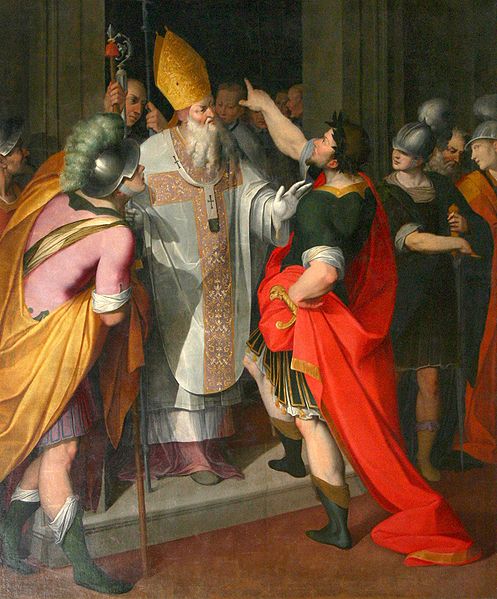
St Ambrose Stopping Theodosius from entering the Church. For his responsibility for a massacre at Thessalonika in 390, the emperor Theodosius was excommunicated by St. Ambrose until he had public penance. The emperor is shown on the church steps surrounded by his courtiers. St. Ambrose forbids him to enter.
Gregory had hardly settled down to the work of administration of the Diocese of Constantinople, when Theodosius carried out his long-cherished purpose of summoning thither a general council of the Eastern Church. One hundred and fifty bishops met in council, in May, 381, the object of the assembly being, as Socrates plainly states, to confirm the faith of Nicaea, and to appoint a bishop for Constantinople (see CONSTANTINOPLE, THE FIRST COUNCIL OF). Among the bishops present were thirty-six holding semi-Arian or Macedonian opinions; and neither the arguments of the orthodox prelates nor the eloquence of Gregory, who preached at Pentecost, in St. Sophia’s, on the subject of the Holy Spirit, availed to persuade them to sign the orthodox creed. As to the appointment of the bishopric, the confirmation of Gregory to the see could only be a matter of form. The orthodox bishops were all in favor, and the objection (urged by the Egyptian and Macedonian prelates who joined the council later) that his translation from one see to another was in opposition to a canon of the Nicene council was obviously unfounded. The fact was well known that Gregory had never, after his forced consecration at the instance of Basil, entered into possession of the See of Sasima, and that he had later exercised his episcopal functions at Nazianzus, not as bishop of that diocese, but merely as coadjutor of his father. Gregory succeeded Meletius as president of the council, which found itself at once called on to deal with the difficult question of appointing a successor to the deceased bishop. There had been an understanding between the two orthodox parties at Antioch, of which Meletius and Paulinus had been respectively bishops that the survivor of either should succeed as sole bishop. Paulinus, however, was a prelate of Western origin and creation, and the Eastern bishops assembled at Constantinople declined to recognize him. In vain did Gregory urge, for the sake of peace, the retention of Paulinus in the see for the remainder of his life, already fare advanced; the Fathers of the council refused to listen to his advice, and resolved that Meletius should be succeeded by an Oriental priest. “It was in the East that Christ was born”, was one of the arguments they put forward; and Gregory’s retort, “Yes, and it was in the East that he was put to death”, did not shake their decision. Flavian, a priest of Antioch, was elected to the vacant see; and Gregory, who relates that the only result of his appeal was “a cry like that of a flock of jackdaws” while the younger members of the council “attacked him like a swarm of wasps”, quitted the council, and left also his official residence, close to the church of the Holy Apostles.
Gregory had now come to the conclusion that not only the opposition and disappointment which he had met with in the council, but also his continued state of ill-health, justified, and indeed necessitated, his resignation of the See of Constantinople, which he had held for only a few months. He appeared again before the council, intimated that he was ready to be another Jonas to pacify the troubled waves, and that all he desired was rest from his labours, and leisure to prepare for death. The Fathers made no protest against this announcement, which some among them doubtless heard with secret satisfaction; and Gregory at once sought and obtained from the emperor permission to resign his see. In June, 381, he preached a farewell sermon before the council and in presence of an overflowing congregation. The peroration of this discourse is of singular and touching beauty, and unsurpassed even among his many eloquent orations. Very soon after its delivery he left Constantinople (Nectarius, a native of Cilicia, being chosen to succeed him in the bishopric), and retired to his old home at Nazianzus. His two extant letters addressed to Nectarius at his time are noteworthy as affording evidence, by their spirit and tone, that he was actuated by no other feelings than those of interested goodwill towards the diocese of which he was resigning the care, and towards his successor in the episcopal charge. On his return to Nazianzus, Gregory found the Church there in a miserable condition, being overrun with the erroneous teaching of Apollinaris the Younger, who had seceded from the Catholic communion a few years previously, and died shortly after Gregory himself. Gregory’s anxiety was now to find a learned and zealous bishop who would be able to stem the flood of heresy which was threatening to overwhelm the Christian Church in that place. All his efforts were at first unsuccessful, and he consented at length with much reluctance to take over the administration of the diocese himself. He combated for a time, with his usual eloquence and as much energy as remained to him, the false teaching of the adversaries of the Church; but he felt himself too broken in health to continue the active work of the episcopate, and wrote to the Archbishop of Tyana urgently appealing to him to provide for the appointment of another bishop. His request was granted, and his cousin Eulalius, a priest of holy life to whom he was much attached, was duly appointed to the See of Nazianzus. This was toward the end of the year 383, and Gregory, happy in seeing the care of the diocese entrusted to a man after his own heart, immediately withdrew to Arianzus, the scene of his birth and his childhood, where he spent the remaining years of his life in retirement, and in the literary labours, which were so much more congenial to his character than the harassing work of ecclesiastical administration in those stormy and troubled times.
Looking back on Gregory’s career, it is difficult not to feel that from the day when he was compelled to accept priestly orders, until that which saw him return from Constantinople to Nazianzus to end his life in retirement and obscurity, he seemed constantly to be placed, through no initiative of his own, in positions apparently unsuited to his disposition and temperament, and not really calculated to call for the exercise of the most remarkable and attractive qualities of his mind and heart. Affectionate and tender by nature, of highly sensitive temperament, simple and humble, lively and cheerful by disposition, yet liable to despondency and irritability, constitutionally timid, and somewhat deficient, as it seemed, both in decision of character and in self-control, he was very human, very lovable, very gifted — yet not, one might be inclined to think, naturally adapted to play the remarkable part which he did during the period preceding and following the opening of the Council of Constantinople. He entered on his difficult and arduous work in that city within a few months of the death of Basil, the beloved friend of his youth; and Newman, in his appreciation of Gregory’s character and career, suggests the striking thought that it was his friend’s lofty and heroic spirit which had entered into him, and inspired him to take the active and important part which fell to his lot in the work of re-establishing the orthodox and Catholic faith in the eastern capital of the empire. It did, in truth, seem to be rather with the firmness and intrepidity, the high resolve and unflinching perseverance, characteristic of Basil, than in his own proper character, that of a gentle, fastidious, retiring, timorous, peace-loving saint and scholar, that he sounded the war-trumpet during those anxious and turbulent months, in the very stronghold and headquarters of militant heresy, utterly regardless to the actual and pressing danger to his safety, and even his life which never ceased to menace him. “May we together receive”, he said at the conclusion of the wonderful discourse which he pronounced on his departed friend, on his return to Asia from Constantinople, “the reward of the warfare which we have waged, which we have endured.” It is impossible to doubt, reading the intimate details which he has himself given us of his long friendship with, and deep admiration of, Basil, that the spirit of his early and well-loved friend had to a great extent moulded and informed his own sensitive and impressionable personality and that it was this, under God, which nerved and inspired him, after a life of what seemed, externally, one almost of failure, to co-operate in the mighty task of overthrowing the monstrous heresy which had so long devastated the greater part of Christendom, and bringing about at length the pacification of the Eastern Church.
During the six years of life which remained to him after his final retirement to his birth-place, Gregory composed, in all probability, the greater part of the copious poetical works which have come down to us. These include a valuable autobiographical poem of nearly 2000 lines, which forms, of course, one of the most important sources of information for the facts of his life; about a hundred other shorter poems relating to his past career; and a large number of epitaphs, epigrams, and epistles to well-known people of the day. Many of his later personal poems refer to the continuous illness and severe sufferings, both physical and spiritual, which assailed him during his last years, and doubtless assisted to perfect him in those saintly qualities which had never been wanting to him, rudely shaken though he had been by the trails and buffetings of his life. In the tiny plot of ground at Arianzus, all (as has already been said) that remained to him of his rich inheritance, he wrote and meditated, as he tells, by a fountain near which there was a shady walk, his favourite resort. Here, too, he received occasional visits from intimate friends, as well as sometimes from strangers attracted to his retreat by his reputation for sanctity and learning; and here he peacefully breathed his last. The exact date of his death is unknown, but from a passage in Jerome (De Script. Eccl.) it may be assigned, with tolerable certainty, to the year 389 or 390.
Some account must now be given of Gregory’s voluminous writings, and of his reputation as an orator and a theologian, on which, more than on anything else, rests his fame as one of the greatest lights of the Eastern Church. His works naturally fall under three heads, namely his poems, his epistles, and his orations. Much, though by no means all, of what he wrote has been preserved, and has been frequently published, the editio princeps of the poems being the Aldine (1504), while the first edition of his collected works appeared in Paris in 1609-11. The Bodleian catalogue contains more than thirty folio pages enumerating various editions of Gregory’s works, of which the best and most complete are the Benedictine edition (two folio volumes, begun in 1778, finished in 1840), and the edition of Migne (four volumes XXXV – XXXVIII, in P.G., Paris, 1857 – 1862).
Poetical Compositions
These, as already stated, comprise autobiographical verses, epigrams, epitaphs and epistles. The epigrams have been translated by Thomas Drant (London, 1568), the epitaphs by Boyd (London, 1826), while other poems have been gracefully and charmingly paraphrased by Newman in his “Church of the Fathers”. Jerome and Suidas say that Gregory wrote more than 30,000 verses; if this is not an exaggeration, fully two-thirds of them have been lost. Very different estimates have been formed of the value of his poetry, the greater part of which was written in advanced years, and perhaps rather as a relaxation from the cares and troubles of life than as a serious pursuit. Delicate, graphic, and flowing as are many of his verses, and giving ample evidence of the cultured and gifted intellect which produced them, they cannot be held to parallel (the comparison would be an unfair one, had not many of them been written expressly to supersede and take the place of the work of heathen writers) the great creations of the classic Greek poets. Yet Villemain, no mean critic, places the poems in the front rank of Gregory’s compositions, and thinks so highly of them that he maintains that the writer ought to be called, pre-eminently, not so much the theologian of the East as “the poet of Eastern Christendom”.
Prose Epistles
These, by common consent, belong to the finest literary productions of Gregory’s age. All that are extant are finished compositions; and that the writer excelled in this kind of composition is shown from one of them (Ep. ccix, to Nicobulus) in which he enlarges with admirable good sense on the rules by which all letter-writers should be guided. It was at the request of Nicobulus, who believed, and rightly, that these letters contained much of permanent interest and value, that Gregory prepared and edited the collection containing the greater number of them which has come down to us. Many of them are perfect models of epistolary style — short, clear, couched in admirably chosen language, and in turn witty and profound, playful, affectionate and acute.
Orations
Both in his own time, and by the general verdict of posterity, Gregory was recognized as one of the very foremost orators who have ever adorned the Christian Church. Trained in the finest rhetorical schools of his age, he did more than justice to his distinguished teachers; and while boasting or vainglory was foreign to his nature, he frankly acknowledged his consciousness of his remarkable oratorical gifts, and his satisfaction at having been enabled to cultivate them fully in his youth. Basil and Gregory, it has been said, were the pioneers of Christian eloquence, modeled on, and inspired by, the noble and sustained oratory of Demosthenes and Cicero, and calculated to move and impress the most cultured and critical audiences of the age. 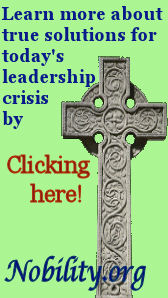 Only comparatively few of the numerous orations delivered by Gregory have been preserved to us, consisting of discourses spoken by him on widely different occasions, but all marked by the same lofty qualities. Faults they have, of course: lengthy digressions, excessive ornament, strained antithesis, laboured metaphors, and occasional over-violence of invective. But their merits are far greater than their defects, and no one can read them without being struck by the noble phraseology, perfect command of the purest Greek, high imaginative powers, lucidity and incisiveness of thought, fiery zeal and transparent sincerity of intention, by which they are distinguished. Hardly any of Gregory’s extant sermons are direct expositions of Scripture, and they have for this reason been adversely criticized. Bossuet, however, points out with perfect truth that many of these discourses are really nothing but skillful interweaving of Scriptural texts, a profound knowledge of which is evident from every line of them.
Only comparatively few of the numerous orations delivered by Gregory have been preserved to us, consisting of discourses spoken by him on widely different occasions, but all marked by the same lofty qualities. Faults they have, of course: lengthy digressions, excessive ornament, strained antithesis, laboured metaphors, and occasional over-violence of invective. But their merits are far greater than their defects, and no one can read them without being struck by the noble phraseology, perfect command of the purest Greek, high imaginative powers, lucidity and incisiveness of thought, fiery zeal and transparent sincerity of intention, by which they are distinguished. Hardly any of Gregory’s extant sermons are direct expositions of Scripture, and they have for this reason been adversely criticized. Bossuet, however, points out with perfect truth that many of these discourses are really nothing but skillful interweaving of Scriptural texts, a profound knowledge of which is evident from every line of them.
Gregory’s claims to rank as one of the greatest theologians of the early Church are based, apart from his reputation among his contemporaries, and the verdict of history in his regard, chiefly on the five great “Theological Discourses” which he delivered at Constantinople in the course of the year 380. In estimating the scope and value of these famous utterances, it is necessary to remember what was the religious condition of Constantinople when Gregory, at the urgent instance of Basil, of many other bishops, and of the sorely-tried Catholics of the Eastern capital, went thither to undertake the spiritual charge of the faithful. It was less as an administrator, or an organizer, than as a man of saintly life and of oratorical gifts famous throughout the Eastern Church, that Gregory was asked, and consented, to undertake his difficult mission; and he had to exercise those gifts in combating not one but numerous heresies which had been dividing and desolating Constantinople for many years. Arianism in every form and degree, incipient, moderate, and extreme, was of course the great enemy, but Gregory had also to wage war against the Apollinarian teaching, which denied the humanity of Christ, as well as against the contrary tendency — later developed into Nestorianism — which distinguished between the Son of Mary and the Son of God as two distinct and separate personalities.
A saint first, and a theologian afterwards, Gregory in one of his early sermons at the Anastasia insisted on the principle of reverence in treating of the mysteries of faith (a principle entirely ignored by his Arian opponents), and also on the purity of life and example which all who dealt with these high matters must show forth if their teaching was to be effectual. In the first and second of the five discourses he develops these two principles at some length, urging in language of wonderful beauty and force the necessity for all who would know God aright to lead a supernatural life, and to approach so sublime a study with a mind pure and free from sin. The third discourse (on the Son) is devoted to a defence of the Catholic doctrine of the Trinity, and a demonstration of its consonance with the primitive doctrine of the Unity of God. The eternal existence of the Son and Spirit are insisted on, together with their dependence on the Father as origin or principle; and the Divinity of the Son is argued from Scripture against the Arians, whose misunderstanding of various Scripture texts is exposed and confuted. In the fourth discourse, on the same subject, the union of the Godhead and Manhood in Christ Incarnate is set forth and luminously proved from Scripture and reason. The fifth and final discourse (on the Holy Spirit) is directed partly against the Macedonian heresy, which denied altogether the Divinity of the Holy Ghost, and also against those who reduced the Third Person of the Trinity to a mere impersonal energy of the Father. Gregory, in reply to the contention that the Divinity of the Spirit is not expressed in Scripture, quotes and comments on several passages which teach the doctrine by implication, adding that the full manifestation of this great truth was intended to be gradual, following on the revelation of the Divinity of the Son. It is to be noted that Gregory nowhere formulates the doctrine of the Double Procession, although in his luminous exposition of the Trinitarian doctrine there are many passages which seem to anticipate the fuller teaching of the Quicumque vult. No summary, not even a faithful verbal translation, can give any adequate idea of the combined subtlety and lucidity of thought, and rare beauty of expression, of these wonderful discourses, in which, as one of his French critics truly observes, Gregory “has summed up and closed the controversy of a whole century”. The best evidence of their value and power lies in the fact that for fourteen centuries they have been a mine whence the greatest theologians of Christendom have drawn treasures of wisdom to illustrate and support their own teaching on the deepest mysteries of the Catholic Faith.
Acta SS.; Lives prefixed to MIGNE, P.G. (1857) XXXV, 147-303; Lives of the Saints collected from Authentick Records (1729), II; BARONIUS, De Vita Greg. Nazianz. (Rome, 1760); DUCHESNE, Hist. Eccl., ed. BRIGHT (Oxford, 1893), 195, 201, etc.; ULLMAN, Gregorius v. Nazianz der Theologe (Gotha, 1867), tr. COX (Londone, 1851); BENOIT, Saint Greg. de Nazianze (Paris, 1876); BAUDUER, Vie de S. Greg. de Nazianze (Lyons, 1827); WATKINS in Dict. Christ. Biog., s. v. Gregorius Nazianzenus; FLEURY, Hist. Ecclesiastique (Paris, 1840), II, Bk. XVIII; DE BROGLIE, L’eglise et l’Empire Romain au IV siecle (Paris, 1866), V; NEWMAN, The arians of the Fourth Century (London, 1854), 214-227; IDEM, Church of the Fathers in Historical Sketches; BRIGHT, The Age of the Fathers (London, 1903), I, 408-461; PUSEY, The Councils of the Church A.D. 31 – A.D. 381 (Oxford, 1857), 276-323; HORE, Eighteen Centuries of the Orthodox Greek Church (London, 1899), 162, 164, 168, etc; TILLEMONT, Mem. Hist. Eccles., IX; MASON, Five Theolog. Discourses of Greg. of Nazianz. (Cambridge, 1899).
D.O. HUNTER-BLAIR (Catholic Encyclopedia)
